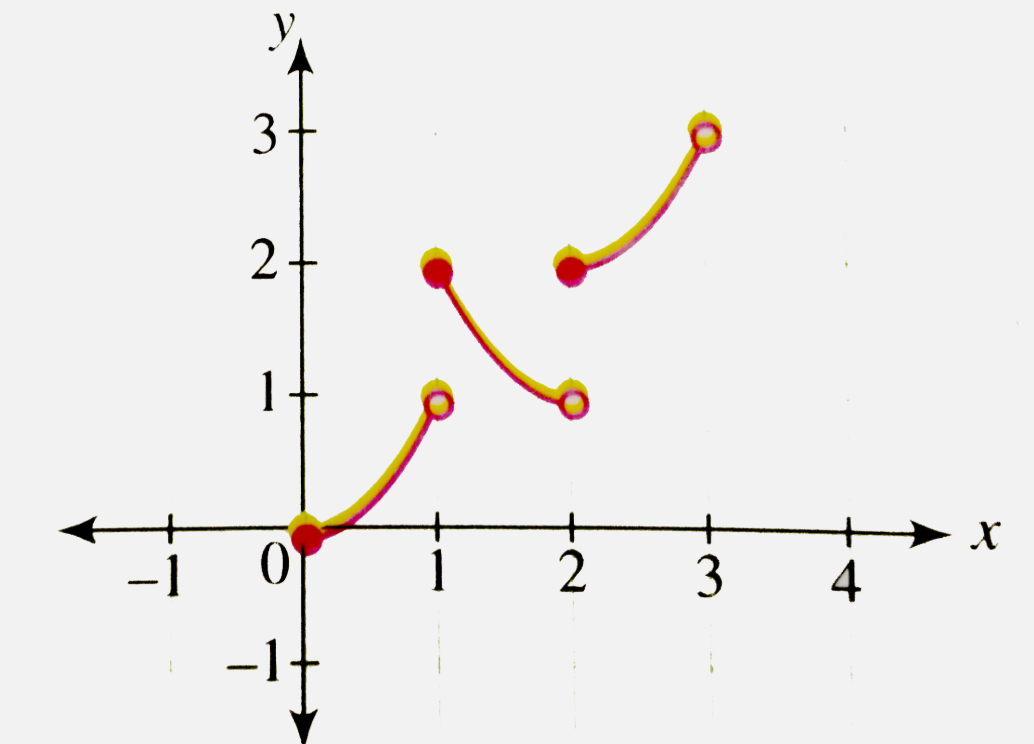A function f:R→R satisfy the equation f(x)f(y)−f(xy)=x+y for all x,y∈R and f(y)>0, thenSolution in Tamil
f(x)=x+12
f(x)=12+1
f(x)=x2−1
f(x)=x+1
The correct Answer is:C
Taking x = y = 1, we get
f(1)f(1)−f(1)=2
⇒ f2(1)−f(1)−2=0
⇒ (f(1)−2)(f(1)+1)=0
⇒ f(1)=2
Taking y = 1, we get
f(x).f(1)−f(x)=x+1
⇒ f(x)=x+1
⇒ f−1(x)=x−1
∴ f(x).f−1(x)=x2−1
Topper's Solved these Questions
- BOOK - CENGAGECHAPTER - FUNCTIONSEXERCISE - Multiple Correct Answers Type10videos
FUNCTIONS
- BOOK - CENGAGECHAPTER - FUNCTIONSEXERCISE - Comprehension Type7videos
FUNCTIONS
- BOOK - CENGAGECHAPTER - EQUATION OF PLANE AND ITS APPLICATIONS -IIEXERCISE - DPP 3.418videos
EQUATION OF PLANE AND ITS APPLICATIONS -II
- BOOK - CENGAGECHAPTER - GETTING STARTED WITH GRAPHSEXERCISE - Exercise18videos
GETTING STARTED WITH GRAPHS
Similar Questions
The function f(x)=cos−1⎛⎝2[|sinx|+|cosx|]sin2x+2sinx+114⎞⎠ is defined if x belongs to (where [.] represents the greatest integer function)
03:49View SolutionLet f(x)=x2−2x−1∀x∈R Let f:(−∞,a]→[b,∞), where a is the largest real number for which f(x) is bijective. If f:R→R , g(x)=f(x)+3x−1 , then the least value of function y=g(|x|) is
02:13View SolutionLet A(0,6,6), B(6,6,0) and C(6,0,6) are three points and point D is moving on the line x+z−3=0=y. If G is centroid of ΔABC, then minimum value of GD is
04:38View SolutionDoes the following graph pass the vertical or horizontal line test ?
 View Solution
View SolutionA function f:R rarr R satisfy the equation f(x)f(y)-f(xy)=x+y for all x,y in R and f(y)>0, then
05:00View SolutionIf a real valued function f(x) satisfies the equation f(x+y)=f(x)+f(y) for all x,y in R then f(x) is
01:45View SolutionA function f:R→R satisfies the equation f(x+y)=f(x).f(y) for all, f(x)≠0. Suppose that the function is differentiable at x = 0 and f'(0) = 2. Then,
06:58View SolutionLet a function f:R→R, where R is the set of real nos. satisfying the equation f(x+y)=f(x)+f(y)∀x,y if f(x) is continuous at x = 0, then
03:23View Solutionमाना लीजिये f:R→R एक फलन है, जो समीकरण
f(x+y)=f(x)+f(y),∀x,y∈R
को संतुष्ट करता है। यदि x=0 पर फलन f(x) अवकलनीय (differentiable) है, तो -04:08View SolutionIf for a function f : R→Rf(x+y)=F(x)+f(y) for all x and y then f(0) is
04:32View SolutionA function f:R→R satisfies that equation f(x+y)=f(x)f(y) for all x, y∈R , f(x)≠0 . Suppose that the function f(x) is differentiable at x=0 and f′(0)=2 . Prove that f′(x)=2 f(x) .
04:43View SolutionA function f : R→R satisfies the equation f(x)f(y)−f(xy)=x+y∀x,y∈Randf(1)>0, then
02:54View SolutionA function f:R→R satisfy the equation f(x)f(y)−f(xy)=x+y for all x,y∈R and f(y)>0, then
03:26View SolutionA function f:R→R satisfies that equation f(x+y)=f(x)f(y) for all x, y∈R , f(x)≠0 . Suppose that the function f(x) is differentiable at x=0 and f′(0)=2 . Prove that f′(x)=2 f(x) .
05:29View SolutionA function f:R→R satisfies the equation f(x+y)=f(x).f(y) for all, f(x)≠0. Suppose that the function is differentiable at x = 0 and f'(0) = 2. Then,
04:33View Solution

